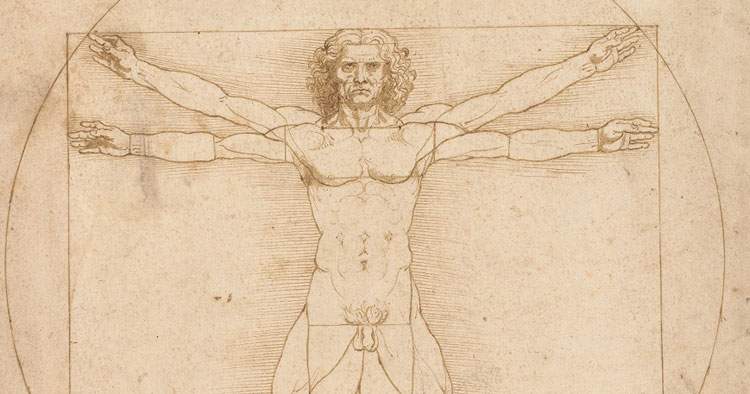TheVitruvian Man, Leonardo da Vinci ’s famous drawing(here an in-depth study of the work), would be a depiction of a secret algorithm that no one, beyond the few who were supposed to convey its message, was supposed to know about: this is the belief of Roberto Concas, former director of the National Art Gallery of Cagliari, who claims to have reached its conclusion after decades of study. An exhibition, to be held at the Pinacoteca in the first real of 2020, as part of which the studies will be presented, is also already ready: Concas says that behind many Renaissance (but also later) works of art lies a precise mathematical calculation defined in theVitruvian Man.
According to Concas, there are many details in the drawing that do not add up: the figure that is slightly different in measurements between the left and right sides, the circle that is not perfect, the square with the vertical sides slightly tilted outward, the singularity of the straight and spread double legs, and again the marks for the division of the figure into four parts, and much more. All of this would suggest that behind theVitruvian Man there is a mathematical formula that, for a long time, artists, handing it down from workshop to workshop, would have used to create images capable of complying with ecclesiastical canons, and thus capable of having the artists themselves recognized as part of a system. Concas, after observations and even micrometric reconnaissance, is convinced that he has found confirmation of the existence of the algorithm and also of a complex ensemble system that remained precluded from our view for five hundred years. In his view, unknown, little or no addressed, or unresolved aspects of Leonardo’s famous work would thus find explanation.
“As sometimes happens in research,” Concas anticipates, “while I was looking for something else, here is the turning point. Which is configured in the form, absolutely unprecedented, of an algorithm, a simple sequence of arithmetic operations, two divisions and a subtraction, which allowed one to find, in the pictorial retables and triptychs, the measurements of the central and side panels, a repeated condition that gave proof of itself. From this finding of the algorithm, and unintentionally, the search went on into an intricate system of ensembles, which proved to be fraught with pitfalls, including an encrypted language in Leonardo da Vinci’s most famous drawing and even a solving light on the ’Divine Proportion’ that the mathematical friar Luca Pacioli described as a ’most secret science.’”
“The theory, I would say better the discovery of Dr. Concas,” says the director of the Polo Museale della Sardegna, Giovanna Damiani, “is, in my opinion, definable as ’revolutionary,’ capable of imposing a new paradigm of reading in the history of art, a new canon. Which does not erase those that are customary to us but opens to new interpretations, perhaps intuited by some art historians but never until now codified.”
Image: Leonardo da Vinci, The Proportions of the Human Body According to Vitruvius - Vitruvian Man, detail (c. 1490; metal point, pen and ink, touches of watercolor on white paper, 34.4 x 24.5 cm; Venice, Gallerie dellAccademia)
 |
| Vitruvian man, according to former director of Cagliari National Picture Gallery is a secret algorithm |
Warning: the translation into English of the original Italian article was created using automatic tools. We undertake to review all articles, but we do not guarantee the total absence of inaccuracies in the translation due to the program. You can find the original by clicking on the ITA button. If you find any mistake,please contact us.